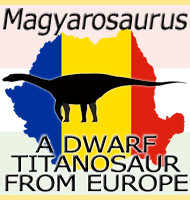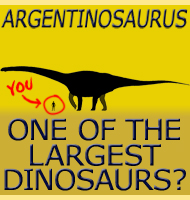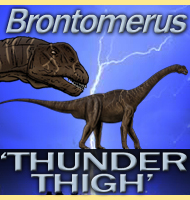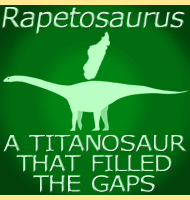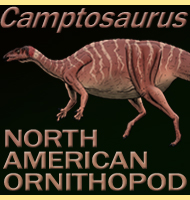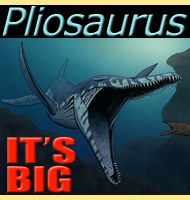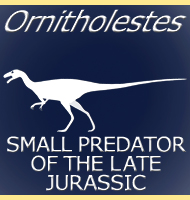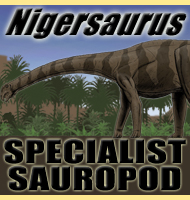


Haplocanthosaurus
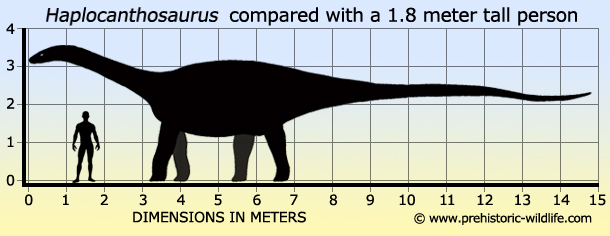
Name:
Haplocanthosaurus
(Simple spined lizard).
Phonetic: Hap-loe-kan-foe-sore-us.
Named By: John Bell Hatcher - 1903.
Synonyms: Haplocanthus,
possibly Morosaurus agilis.
Classification: Chordata, Reptilia, Dinosauria,
Saurischia, Sauropodomorpha, Sauropoda, Diplodocoidea?
Haplocanthosauridae.
Species: H. priscus (type),
H. delfsi.
Diet: Herbivore.
Size: Known to be up to 14.8 meters long.
Known locations: USA, including Colorado and
Wyoming - Morrison Formation.
Time period: Kimmeridgian to Tithonian of the
Jurassic.
Fossil representation: Few individuals represented
by partial post cranial remains.
Haplocanthosaurus
was a genus of sauropod
dinosaur that lived in North America during the
late Jurassic period. The name Haplocanthosaurus
was actually the
second choice of name for this dinosaur as the palaeontologist who
first described it, John Bell Hatcher, originally chose the name
Haplocanthus. However, after this Hatcher became
aware of a fish
genus which sounded just like this, and so in the belief that the
name was preoccupied. Hatcher renamed Haplocanthus
Haplocanthosaurus.
While
Hatcher’s actions to be scientifically accurate are commendable, he
was actually right the first time. While the fish genus sounded
similar, it was actually spelt with an ‘a’ as Haplacanthus,
while the original spelling of Haplocanthus was
spelt with an ‘o’
after the ‘l’. Although a subtle difference, it was still
enough of a difference to define Haplocanthus and Haplacanthus
as
separate genera. Surprisingly this was not actually noticed till
many years afterwards, and by that time the name Haplocanthosaurus
was in familiar use. For this reason a petition was sent to the
ICZN, the body that watches over the naming of animals, to grant
Haplocanthosaurus ‘protected name’ status since Haplocanthus
had
not been used since the initial change. This was accepted so even
though Haplocanthus had technical priority as the
name,
Haplocanthosaurus is the one used to refer to the
genus for greater
clarity. The granting of protected names is not a common occurrence,
though one of the most famous dinosaurs of all time, Tyrannosaurus,
also has protected name status after it was realised that fossils of
the genus were named as something else before Tyrannosaurus
was
established (details are on the main Tyrannosaurus
page).
So
far fossils of a few Haplocanthosaurus have been
found, though as is
often the case, the skull of this sauropod is still unknown. So far
only elements of the post cranial skeleton such as a sacrum and
vertebrae have been found. Though incomplete, Haplocanthosaurus
has
been estimated to reach lengths just short of fifteen meters, which
means that Haplocanthosaurus were actually quite
small when compared to
many other late Jurassic era sauropods.
Exactly
what kind of sauropod the Haplocanthosaurus genus
was is actually still
a matter of debate. The main two options are that the genus
represents either a form of diplodocid (very long and thin build)
or a macronarian (taller, shorter and more stocky), though
whichever one Haplocanthosaurus would have been a
primitive form.
There are good arguements for both, though more current research
learns slightly more towards Haplocanthosaurus
being a diplodocid.
Really though we need to discover more fossils of Haplocanthosaurus,
ideally (and hopefully) a skull since macronarians and diplodocids
had very different skulls to one another.
As
already mentioned, Haplocanthosaurus would have
been a primitive form
of either of these groups, indeed, the genus name Haplocanthosaurus
translates to English as ‘simple spined lizard’ in reference to the
primitive and unspecialised form of the vertebrae. It seems strange
that such a primitive form of sauropod should be living in a time and
place which also saw the presence of advanced diplodocids and
macronarians. It may be that Haplocanthosaurus
was actually a form of
sauropod that was more common earlier on in the Jurassic, and that
the Haplocanthosaurus genus was actually a late
surviving form of the
more primitive ancestors of the more advanced late Jurassic sauropods
of the Morrison Formation.
Haplocanthosaurus
is so far only known from the Morrison Formation of the United States,
a large Formation that also yielded the discovery of other diplodocid
sauropods such as Barosaurus,
Apatosaurus
and even the type genus of
the group, Diplodocus.
Other sauropods such as macronarians like
Camarasaurus
and Brachiosaurus
are also present. The main predators
of the Morrison Formation were large theropod dinosaurs such as
Allosaurus,
Torvosaurus
and Saurophaganax,
and given the overall
smaller size of Haplocanthosaurus, it’s
conceivable that these
predators, and others like them may have occasionally targeted this
sauropod as prey.
Haplocanthosaurus
should not be confused with the predatory theropod Acrocanthosaurus,
a very different kind of dinosaur that lived in North America during
the early Cretaceous.
Further reading
- A new name for the dinosaur Haplocanthus
Hatcher - J. B.
Hatcher - 1903a.
- Early evolution and higherlevel phylogeny of sauropod dinosaurs.
- J. A. Wilson & P. C. Sereno - 1998.
- The phylogenetic taxonomy of Diplodocoidea (Dinosauria:
Sauropoda). - M. P. Taylor & D. Naish - 2005.
- A phylogenetic analysis of Diplodocoidea (Saurischia:
Sauropoda). J. A. Whitlock - 2011.
- Haplocanthosaurus (Saurischia: Sauropoda) from the lower Morrison
Formation (Upper Jurassic) near Snowmass, Colorado. - Volumina
Jurassica. 12 (2): 197–210. - J. R. Forster & M. J. Wedel -
2014.
Random favourites
 |
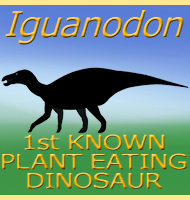 |
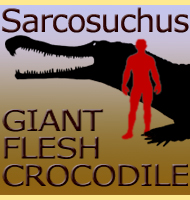 |
